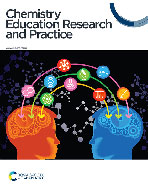Characterizing change in students' self-assessments of understanding when engaged in instructional activities
Abstract
Students’ abilities to self-assess their understanding can influence their learning and academic performance. Different factors, such as performance level, have been shown to relate to student self-assessment. In this study, hierarchical linear modeling was used to identify factors and quantify their effects on the changes observed in chemistry students’ self-assessed understanding when engaging in instructional activity. This study replicates and expands on previous findings regarding performance by showing that the worse students performed on a task, the more likely they were to lower their self-assessed understanding after that activity. Task difficulty was found to be a significant effect on change in students' self assessments with students being more likely to lower their self-assessed understanding after a more difficult task and raise it following an easier task independent of performance. Perceived comparative understanding (how students thought they compared to their surrounding peers) was also found to be a significant effect. Students who later reported their understanding to be lower than their peers, as compared to those who later reported their understanding to be about the same as their peers, were observed to have lowered their self-assessed understanding. Actual comparative performance (difference in performance of the student to their surrounding peers), gender, and feedback were not found to be significant effects on change in students’ self-assessed understanding. The results of this investigation may inform instructors on how their instructional decisions differentially impact changes in students’ judgements about their understanding.


 Please wait while we load your content...
Please wait while we load your content...